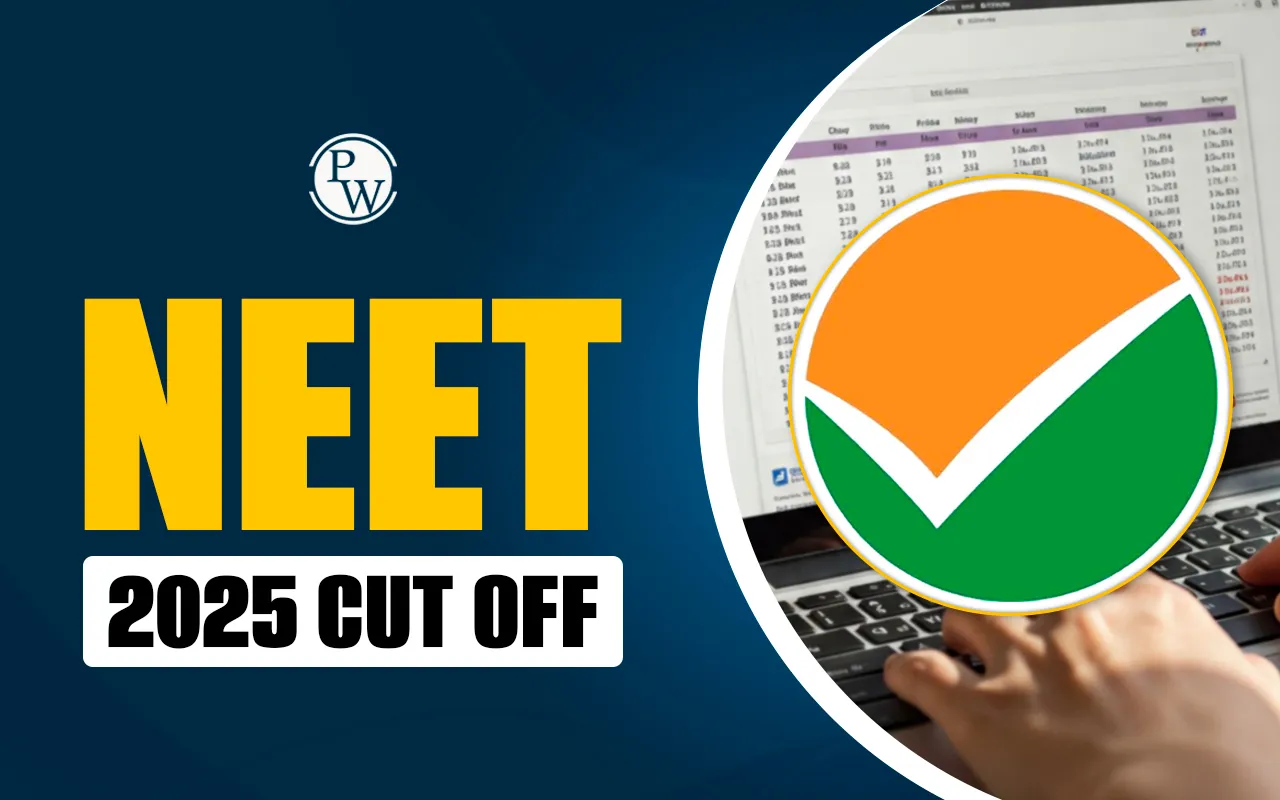
Difference Between Mitosis and Meiosis: All living things grow and produce new organisms by dividing cells. In eukaryotic cells, cell division occurs through mitosis and meiosis. While these two processes are similar, there are also important distinctions between them. Cell division is a carefully controlled process that follows a specific sequence of steps.
Mitosis and meiosis are two different ways that cells divide. Both processes involve splitting a cell into two sets of chromosomes, but there are key difference between mitosis and meiosis. Let's look at the main difference between mitosis and meiosis
| NEET Biology Syllabus | NEET Biology Diagrams |
| NEET Biology MCQ | NEET Biology Chapter wise Weightage |
| NEET Biology Notes | NEET Previous Year Question papers |
Mitosis Definition
Mitosis is the process by which cells divide, occurring in all living cells. It has four main stages: prophase, metaphase, anaphase, and telophase. Mitosis is the mechanism by which cells divide without mixing up genetic material, as occurs in asexual reproduction.
During mitosis, the cell's protective layer, or nuclear membrane, breaks down, and tiny structures called spindle fibers attach to and pull apart chromatids, which are genetic material. Once the chromatids are at opposite ends of the cell, the spindle fibers disappear, and a new nuclear membrane forms around the genetic material, creating two identical cell nuclei. This is analogous to copying the original nucleus when the cell is preparing to divide.
Meiosis Definition
Meiosis is a type of cell division that results in cells with half the number of chromosomes as the original cell; this process, known as reduction division, occurs in germ cells that produce gametes like eggs and sperm.
In humans, the diploid number of chromosomes is 46. After meiosis, each gamete has a haploid number of chromosomes, which is 23. This reduction in the number of chromosomes ensures that when an egg and sperm fuse during fertilization, the resulting zygote will have the correct number of chromosomes (46).
Meiosis is a two-step process that consists of meiosis I and meiosis II.
Meiosis I begins with a prophase stage, during which the chromosomes become visible and the centrioles move to opposite cell poles. The metaphase stage is characterized by the alignment of the chromosomes at the metaphase plate. During anaphase, the sister chromatids of each chromosome separate and move to opposite poles of the cell. The nuclear envelope reforms and the chromosomes reach the poles of the cell during telophase.
Meiosis II is similar to mitosis, except the chromosomes are already haploid. The prophase stage of meiosis II is shorter than the prophase of meiosis I. The metaphase and anaphase stages of meiosis II are similar to those of mitosis. In telophase, the chromosomes reach the cell's poles and the nuclear membrane reforms.
At the end of meiosis, four haploid cells are produced. These cells are genetically distinct from each other and from the original cell.
Difference Between Mitosis and Meiosis
Cell division is a tightly regulated process that follows a precise sequence of steps. Cytokinesis describes the division of a cell's cytoplasm, while mitosis and meiosis are two distinct forms of nuclear division.
Mitosis produces two nuclei that are genetically identical to the original nucleus. In contrast, meiosis yields four nuclei, each containing half the number of chromosomes compared to the original cell. In animals, meiosis exclusively occurs in the cells responsible for forming sex cells (gametes), such as the egg and sperm. Here are the key difference between mitosis and meiosis.
|
Difference Between Mitosis and Meiosis |
||
|---|---|---|
| Basis | Mitosis | Meiosis |
| Significant Discoverer | Discovered by Walther Flemming. | Oscar Hertwig contributed to our understanding of meiosis. |
| Mode of Reproduction | Primarily used in asexual reproduction for growth, repair, and cell reproduction. | Specialized for sexual reproduction, introducing genetic diversity by combining genes from two parents. |
| Cell Occurrence | Occurs in all somatic (body) cells. | Limited to germ cells (sperm and egg) for reproductive purposes. |
| Function | Fundamental for everyday cell maintenance and replication. | Essential for generating genetic diversity during the formation of reproductive cells. |
| Interphase | Each chromosome replicates during the S phase of interphase, resulting in two genetically identical sister chromatids. (Note: Interphase technically occurs between mitotic phases.) | Chromosomes are not visible, but DNA has been duplicated or replicated. |
| Prophase | Duplicated chromosomes appear as two identical sister chromatids. The mitotic spindle begins to form, and chromosomes condense. | Prophase I involves crossing-over and recombination. Homologous chromosomes, consisting of two sister chromatids, pair up as tetrads or bivalents. Chromosome segments are exchanged between non-sister chromatids at crossover points called chiasmata. |
| Metaphase | Chromosomes align at the cell's center during metaphase. | Metaphase I involves the adjustment of chromosomes on the metaphase plate in pairs, promoting genetic variability. |
| Anaphase | Spindle fibers contract, pulling sister chromatids apart. At the end of anaphase, a complete set of daughter chromosomes is found on each pole. | Anaphase I sees sister chromatids staying intact, but homologous chromosomes moving to opposite poles. |
| Cytokinesis | Cytokinesis completes the cell division process during telophase. | Cytokinesis occurs twice, once in Telophase I and again in Telophase II |
Similarities Between Mitosis and Meiosis
Mitosis and meiosis are essential processes in cells that divide genetic material. However, they have different functions. Mitosis is responsible for growth and tissue repair, creating two identical cells. Meiosis is necessary for sexual reproduction, producing four unique cells.
Copying DNA
Both mitosis and meiosis begin by copying DNA during a phase called interphase. This ensures that the genetic material is duplicated before the cell divides.
Steps in Cell Division
Mitosis and meiosis have similar steps, such as prophase, metaphase, anaphase, and telophase. However, the specific events that occur during each step are different.
Purpose and Result
Mitosis produces two identical cells, which help the body to grow, repair, and function properly. Meiosis, however, creates four unique cells essential for sexual reproduction and maintaining genetic diversity.
Jobs in the Body
Mitosis can be thought of as the "handyman" of the cell, fixing and repairing damage. Meiosis is the "specialist," creating the specialized cells needed for reproduction and diversity.
Mixing Up Genes
Mitosis maintains genetic fidelity, ensuring the two daughter cells are identical to the parent cell. Meiosis, however, mixes up the genes, introducing genetic diversity through processes such as crossing over and independent assortment.
Mistakes and Consequences
Mistakes during mitosis can lead to problems with cell growth and division. These errors can cause the cells to become cancerous or malfunction. Mistakes in meiosis can also lead to problems such as infertility or genetic disorders.
Mitosis and meiosis are essential processes that help the body grow, repair, and reproduce. Besides the difference between mitosis and meiosis, these two processes work together to ensure that the cells in our bodies are healthy and functioning correctly.
Physics wallah ensures that NEET preparation and board exam preparation are balanced. PW offers the best courses for preparing for the NEET Exam. PW provides the Best NEET Online Coaching courses at very low prices. PW offers online NEET class 12th coaching to students. The online Class 12th NEET coaching provides the best faculty and comprehensive study materials. Online coaching is essential for NEET aspirants. Candidates should check the NEET Online Courses to start the NEET preparation.
Difference Between Mitosis and Meiosis FAQs
What is the difference between mitosis and meiosis
Are mitosis and meiosis exactly the same?
What are the difference between mitosis and meiosis class 11?
What is the difference between mitosis and meiosis class 12?










